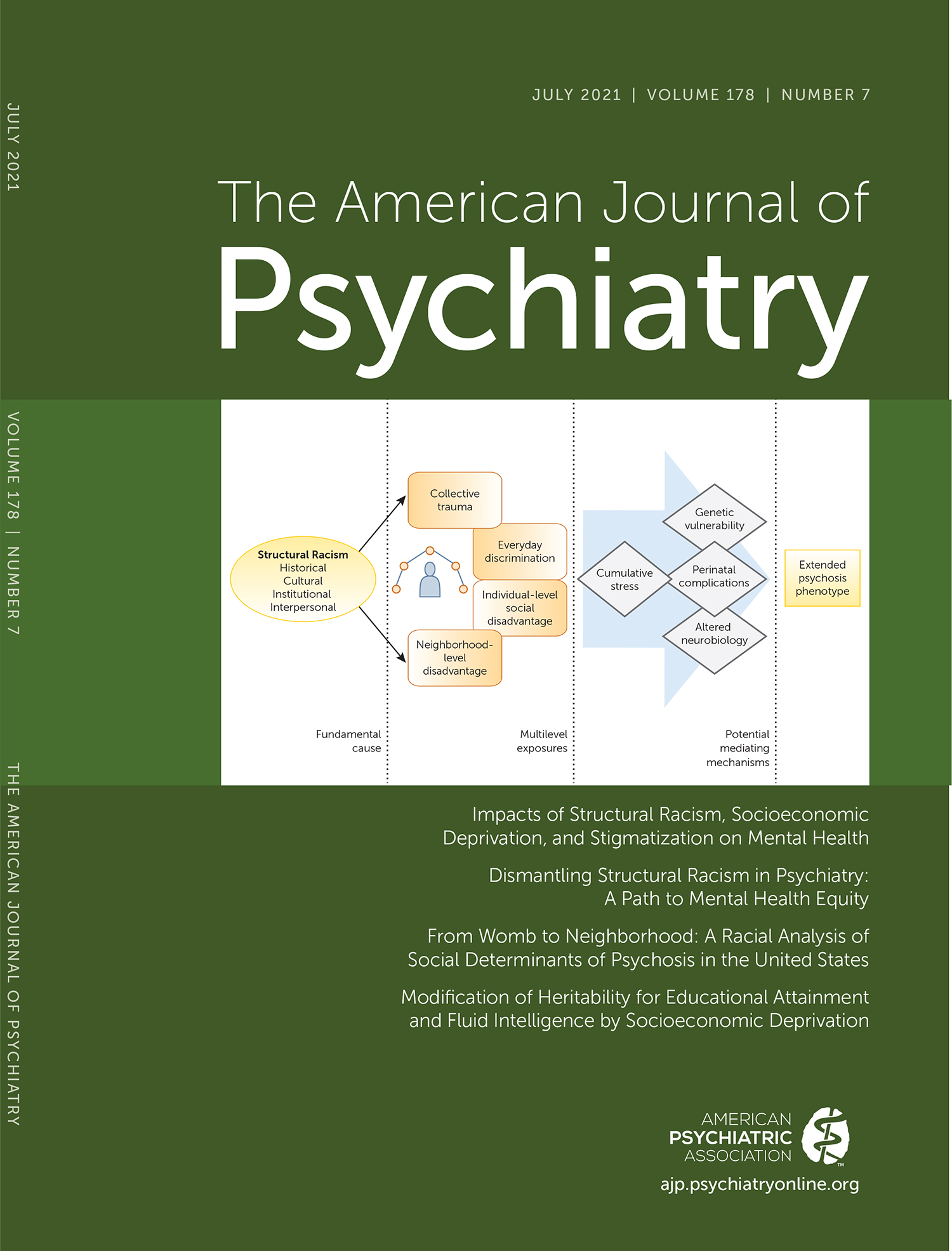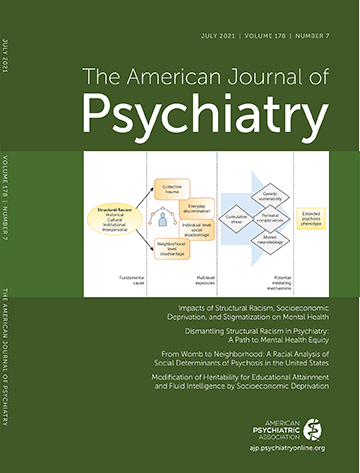In 2011 an article in the
New York Times (
1) reported on a study of high-functioning people with schizophrenia that I was completing with Elyn Saks and others. We were able to recruit an interesting group of people that included physicians, lawyers, and others (
2). The entry criteria required that these individuals have active symptoms of their illness. We focused on how these individuals were able to navigate successful lives despite the burden of their illness. I was hopeful that the
Times article would lead others to disclose their illnesses and that these successful individuals would serve as the face of the illness, as Elyn Saks has done. In other words, people would think of these individuals as representatives of the illness rather than the small minority of severely ill and sometimes frightening people who were reported in the media. I recall an e-mail I received from a judge who was able to lead a successful career while being treated for his illness. He planned to disclose his illness—but only after he retired. Unlike some prominent people with depression and bipolar illness who are willing to talk about their illness, people with schizophrenia—with the exception of Saks and few others—choose to hide their illness because it carries a stigma.
The lack of positive examples contributes to the stigma associated with schizophrenia. The negative attitudes and beliefs about schizophrenia have detrimental effects, including discrimination in housing, employment, and social opportunities (
3). Another effect of stigma is that it can delay treatment for individuals who are experiencing psychotic symptoms. For example, a study from the U.K. (
4) found that in first-episode patients, high levels of stigma belief were associated with longer delays in receiving treatment. A recent report from the NIMH RAISE study (
3) also found that perceived stigma was associated with delays in seeking treatment. These delays are important because there is substantial evidence indicating that they can have long-term consequences. That is, one of the most reproducible findings in the first-episode literature is that the longer the duration of untreated psychosis (or DUP)—which is defined as the length of time between the onset of psychosis and first treatment—the worse the outcome (
5). Outcome in these studies includes psychotic symptoms, negative symptoms, quality of life, and social functioning. In the RAISE study, the median DUP was 74 weeks. The results from this large multisite study indicated that patients with a DUP above the median had a poorer response to the intervention (
6).
There are multiple factors contributing to a long DUP, including a lack of insight in patients and issues in access to care in countries such as the United States. However, reducing stigma is an attractive target for helping people with schizophrenia, since it can affect people with this illness through their entire lifespan. Examples of antistigma campaigns include the Time to Change program in the U.K., which included a national marketing campaign directed at the general public and providers. An evaluation by Henderson and Gronholm (
7) indicates that this program has had some success in reducing discrimination.
The study by Amsalem and colleagues (
8) in this issue takes a somewhat different and very clever approach to addressing stigma. The intervention is based on the finding that social contact interventions that familiarize people with individuals from a stigmatized group are most effective for reducing public stigma. The authors evaluated an efficient intervention consisting of a 90-second video in which a person with schizophrenia describes her personal challenges. This video was compared with a written vignette of the person giving the same description and a nonintervention control condition. The three groups were compared at baseline, after the intervention, and 30 days later. An interesting aspect of the design is the subject pool, which consisted of people enrolled through the Amazon Mechanical Turk or mTurk. The mTurk is an online forum for individuals interested in completing small jobs for modest amounts of money. It has emerged as an efficient way for academic researchers to recruit individuals to complete online tasks such as surveys. It is common for participants to complete hundreds of surveys in any week (
9). However, there is always the possibility that this group will be more interested in completing a survey and earning money than being moved by a compelling story. On the other hand, the authors were able to limit the study to people between 18 and 30 years old, a group that may resemble the peers of first-episode patients. They also included procedures to assure that the subjects followed the study protocol. The results indicated that the video was more effective at reducing negative attitudes toward schizophrenia patients than the vignette or the control condition. The advantages of the video persisted at the 30-day follow-up, which is also encouraging. Although one can question how closely the mTurk sample resembles the general public of young people, the results still point to the usefulness of a very efficient intervention. Moreover, as the authors point out, many young people are interested in brief videos that can be shown on social media platforms. It suggests that negative attitudes toward people with schizophrenia and other illnesses are changeable when people are able to see and hear from people who are living with the illness.
As mentioned earlier, the life stories of people who have learned to live meaningful and successful lives despite having schizophrenia are almost always hidden from view. Instead, the public perception of people with the illness is too often shaped by the untreated and violent small minority of psychotic people who are featured in the media or by the people living in the streets. Changing this perception to a more accurate one has the potential for improving the lives of many people with the illness. Moreover, changing it at the onset of the illness and providing examples of people who are being successfully treated have the potential for changing the long-term course of the illness.

